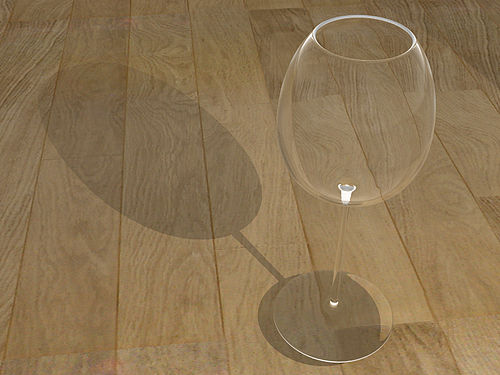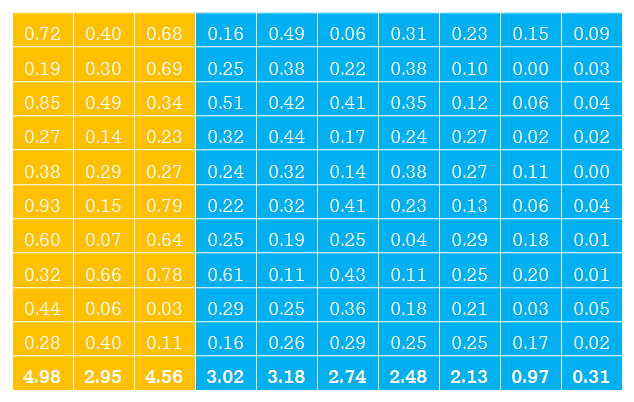Methods of Division
Naive Method
In this method we split the screen into two equal sections, with no pre-calculation. This method has proved to be unefficient for scenes in which most of the objects are on one side of the scene (as in the image below).

Division by Weights
In this method, we split the screen with a single straight vertical/horizontal line. We choose this line by first calculating the approximate weights (in terms of computing time) of different sections of the scene. We place the line at the point at which the weight of one side of the line is as close to possible to the other side. For example, below is a result of the division, for the weights given in the image (last row is the sum):

Division by Coherent Parts
A coherent part is defined as a group of sections of the screen which contain a value higher than a chosen constant weight (we chose the average weight). Intuitively, the coherent parts in the sceen should relect the different objects in the scene. The goal of this division method is similar to that of division by weights, except that the line dividing the sections may be broken and that coherent parts are not divided between different computation units. We met obstacles when trying to implement this method, to which we found solutions that are described in the project book.